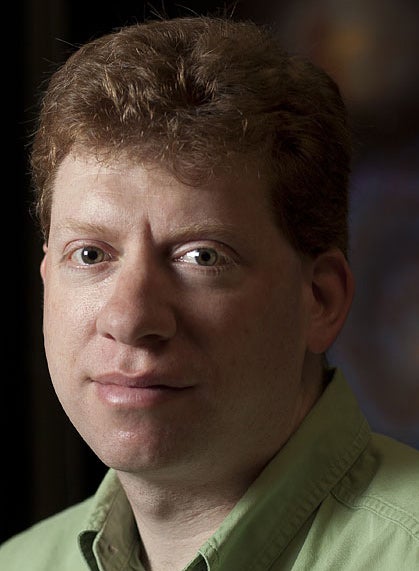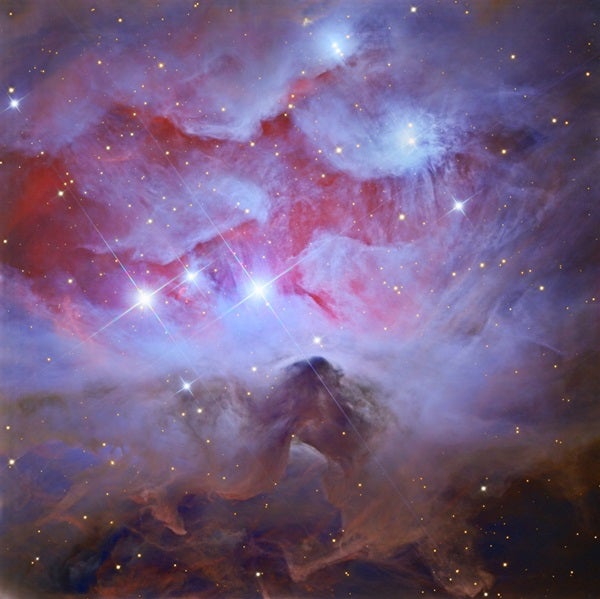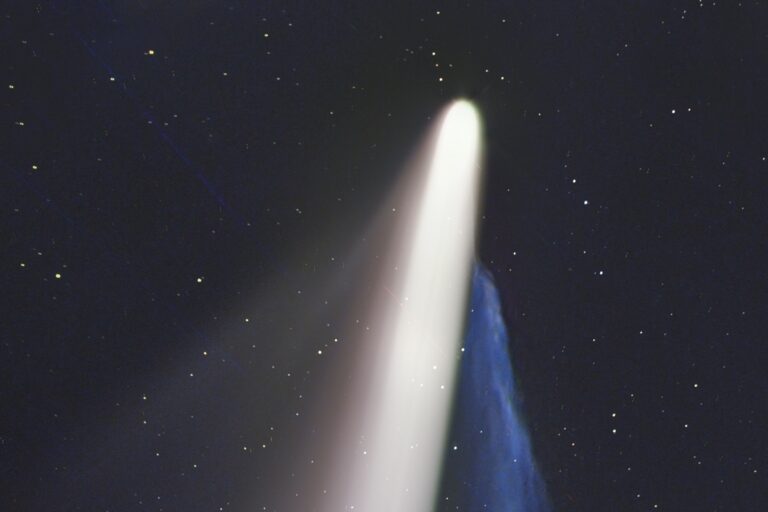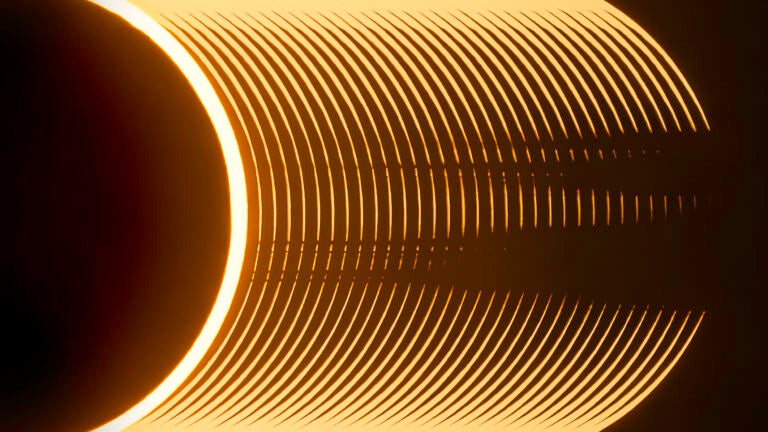Take for example the simple act of touching something. Seeing is not always believing, and touching something, perhaps with a pinch, is considered the gold standard to test reality. But do we really touch anything?
Scale an atom so that its nucleus is the size of a marble and place it in the middle of a football field. At this dimension its attendant electrons, still quite invisible, would orbit around the nucleus in their quantum mechanical way, way out in the stands. Atoms are voluminous bits of empty space compared with the tiny sizes of their constituent parts.
Based on this geometry, you might expect that when you place your hand on a table, it should pass right through, with the atomic nuclei easily missing each other. And while it’s true that electrons are nearly ineffable bits of matter, they influence the space around them (through the Coulomb interaction and the Pauli Exclusion Principle, for you tekkies).
What we feel when we “touch” something is literally force fields emitted by fuzzy quantum mechanical packets of energy. Truly pressing atoms together so they “touch” in the macro-world sense will cause their nuclei to fuse. The most common place to find this happening is in the centers of stars.
And so the way the world really works generally exceeds our ability to sense and often our common intuition as well. The instruments of science become our surrogate senses. When William Herschel spread sunlight into a rainbow and placed a thermometer just beyond the visible red, he discovered rays (he called them “calorific,” while later scientists dubbed them “infrared”) that warmed the thermometer. Although our skin senses this radiation, our eyes do not.
I enjoyed my own Herschel moment in college while studying emission of light from gas discharge tubes. I used a diffraction grating to create the narrow pillars of light that form the spectral fingerprints of particular elements. When I looked up the wavelengths I observed, I discovered I had recorded violet wavelengths beyond the ken of normal human vision. Unfortunately, I have no mutant abilities. Instead, because I used a white piece of paper, whiteners in the material fluoresced and allowed me to see the ultraviolet lines.
So if you are a fellow imager and someone asks you to differentiate the real things from the “Photoshopped” bits, take care how you answer. Giving a thorough explanation of how a CCD camera works and what it records goes a long way in addressing the misconceptions bound in the notion of “Because we can’t see it, hear it, or sense it, how do we know it’s true?” The images we produce are striking examples of the way science works by using tools to gain greater insight into the world around us.











